#Indian sub continent
Text
1. The land of Saptasindhavah (सप्तसिन्धवः)
Since the dawn of civilization, the mighty Himalayas have always protected the people living in Indian sub-continent, not only from natural phenomena like sandstorms originating on central Asia plains or blistering arctic cold winds or great floodwaters sweeping the north Indian plains, that could have created existential problems for the early settlers. The unscalable peaks and ranges of world’s tallest mountain also prevented the barbaric wild Asian steppe hordes, attacking and destroying the inhabitations, including cities and towns of subcontinent, the way they did in China and east Europe.
Yet, in spite of this guardian angel, protecting our borders, wild hordes of invaders and intruders, cruel and murderous tribesmen, monarchs, brave warriors with monarchy aspirations and people who themselves were pushed out from their country, found routes that circumambulated the vast mountain ranges and enter the sub-continent over last two millennia. These intruders and their barbaric armies, created a profound impact on the culture of the sub-continent that had evolved over last five or more millennia, starting from Sindhu-Sarswati Civilization, the Vedic era, Buddhist ideas and finally the Sanatan Dharma. Some of the early intruders adopted to native religions, but some imposed their own religious doctrines, creating a great divisive force that continues to torment the sub-continent, even today.
It so happens that the most profound impact of the intruders took place in a geographical area of the subcontinent, where Sindhu-Sarswati civilization once flourished five or more millennia ago. This land could be rightly called as the heart or core of the sub-continent culture. This region, in the northwest corner of the sub-continent, is none other than the land of seven rivers or Saptasindhavah (सप्तसिन्धवः) of the Vedas.
In the oldest Veda or Rigveda, the sage Angirasa, while offering oblation to Sun God ‘Savita” describes him as,
अ॒ष्टौ व्य॑ख्यत्क॒कुभः॑ पृथि॒व्यास्त्री धन्व॒ योज॑ना स॒प्त सिन्धू॑न् । हि॒र॒ण्या॒क्षः स॑वि॒ता दे॒व आगा॒द्दध॒द्रत्ना॑ दा॒शुषे॒ वार्या॑णि ॥ (1.35.8)
“He has lighted up the eight points of the horizon, the three regions of living beings, the seven rivers; may the golden-eyes Savitā come hither, bestowing upon the offerer of the oblation desirable riches.”
The next question that naturally arises is the names of rivers that constitute this land of seven rivers. Luckily Rigveda helps us even here. The Nadistuti sukta (नदिस्तुति सूक्त), or “the hymn in praise of rivers”, gives us names of these seven rivers for the reconstruction of the geography of this area.
The first and foremost river that this Sukta (10.75.1) mentions is obviously Sindhu or The Indus, the mightiest of them all. Other rivers that are mentioned (10.75.5) in east to west direction are Sarasvati, Shutudri (Sutlej), Parushni (Iravati, Ravi), Asikni (Chenab) and finally Vitasta (Jhelum). This defines the land of seven rivers as the region that begins with Sarswati in the east, but does not end with Indus in the west.
The next verse (10.75.6) describes the tributaries like Kubha (Kabul River), Gomati (Gomal) and Krumu (Kurram),that merge with Sindhu in the plains. Using this information, we can create a map of the landmass, which Rigveda describes as ‘Saptasindhav’. We must also include here the plains, west of Indus River that stretch to the mountains and also the Basin of no longer visible Sarswati River, now found only through archaeological and satellite data. However, we shall not indulge in that endeavor as it is unrelated to our subject matter. Figure 1.1 shows the exact locations of these rivers except River Sarswati.
By Dbach...
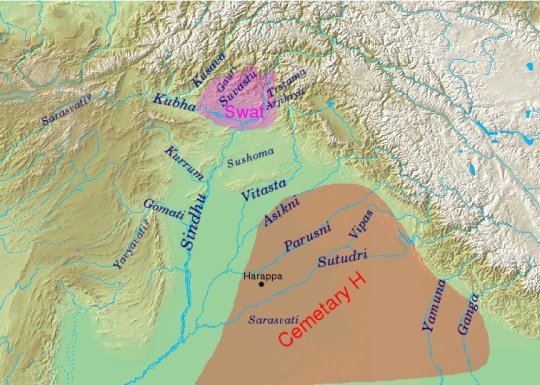
View On WordPress
0 notes
Text




Narrow-headed Softshell Turtle (Chitra indica), family Trionychidae, found in rivers and other waterways of the Indian Sub-continent
ENDANGERED.
Predatory, feeding on a wide variety of small aquatic vertebrates and large invertebrates.
Endangered due to over-harvesting (for food) and habitat degradation.
photographs: Shailendra Singh, Turtle Conservancy, Turtle Survival Alliance
5K notes
·
View notes
Video
youtube
Natures Master Singer - Ashy Prinia , Melodius Songs Of Ashy Prinia ,...
#youtube#Prinia#Ashy Prinia#Bird#Birds#Animals#Nature#Common Birds#Urban Gardens#Yellow Belly#Insectivorous#Indian Sub-continent#Black Beak#Upright Tail#Prinia socialis#Sounds Of Ashy Prinia
0 notes
Text


windy.com- temperatures for the indian sub continent (30/03/2024)
186 notes
·
View notes
Note
How did cotton win over linen anyway?
In short, colonialism, slavery and the industrial revolution. In length:
Cotton doesn't grow in Europe so before the Modern Era, cotton was rare and used in small quantities for specific purposes (lining doublets for example). The thing with cotton is, that's it can be printed with dye very easily. The colors are bright and they don't fade easily. With wool and silk fabrics, which were the more traditional fabrics for outer wear in Europe (silk for upper classes of course), patterns usually needed to be embroidered or woven to the cloth to last, which was very expensive. Wool is extremely hard to print to anything detailed that would stay even with modern technology. Silk can be printed easily today with screen printing, but before late 18th century the technique wasn't known in western world (it was invented in China a millenium ago) and the available methods didn't yeld good results.
So when in the late 17th century European trading companies were establishing trading posts in India, a huge producer of cotton fabrics, suddenly cotton was much more available in Europe. Indian calico cotton, which was sturdy and cheap and was painted or printed with colorful and intricate floral patters, chintz, especially caught on and became very fashionable. The popular Orientalism of the time also contributed to it becoming fasionable, chintz was seen as "exotic" and therefore appealing.

Here's a typical calico jacket from late 18th century. The ones in European markets often had white background, but red background was also fairly common.
The problem with this was that this was not great for the business of the European fabric producers, especially silk producers in France and wool producers in England, who before were dominating the European textile market and didn't like that they now had competition. So European countries imposed trade restrictions for Indian cotton, England banning cotton almost fully in 1721. Since the introduction of Indian cottons, there had been attempts to recreate it in Europe with little success. They didn't have nearly advanced enough fabric printing and cotton weaving techniques to match the level of Indian calico. Cotton trade with India didn't end though. The European trading companies would export Indian cottons to West African market to fund the trans-Atlantic slave trade that was growing quickly. European cottons were also imported to Africa. At first they didn't have great demand as they were so lacking compared to Indian cotton, but by the mid 1700s quality of English cotton had improved enough to be competitive.
Inventions in industrial textile machinery, specifically spinning jenny in 1780s and water frame in 1770s, would finally give England the advantages they needed to conquer the cotton market. These inventions allowed producing very cheap but good quality cotton and fabric printing, which would finally produce decent imitations of Indian calico in large quantities. Around the same time in mid 1700s, The East Indian Company had taken over Bengal and soon following most of the Indian sub-continent, effectively putting it under British colonial rule (but with a corporate rule dystopian twist). So when industrialized English cotton took over the market, The East India Company would suppress Indian textile industry to utilize Indian raw cotton production for English textile industry and then import cotton textiles back to India. In 1750s India's exports were mainly fine cotton and silk, but during the next century Indian export would become mostly raw materials. They effectively de-industrialized India to industrialize England further.
India, most notably Bengal area, had been an international textile hub for millennia, producing the finest cottons and silks with extremely advance techniques. Loosing cotton textile industry devastated Indian local economies and eradicated many traditional textile craft skills. Perhaps the most glaring example is that of Dhaka muslin. Named after the city in Bengal it was produced in, it was extremely fine and thin cotton requiring very complicated and time consuming spinning process, painstakingly meticulous hand-weaving process and a very specific breed of cotton. It was basically transparent as seen depicted in this Mughal painting from early 17th century.
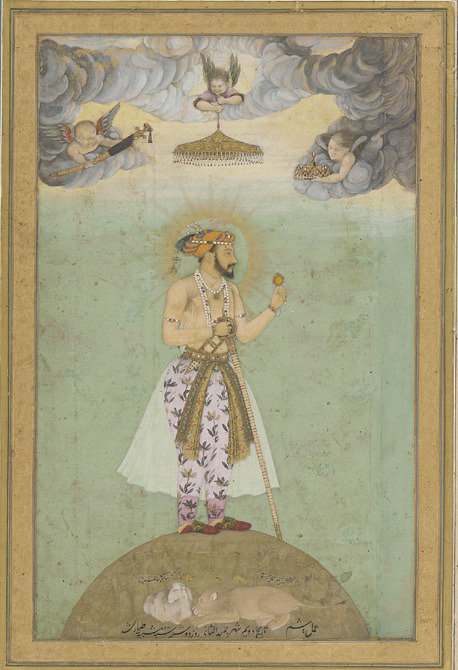
It was used by e.g. the ancient Greeks, Mughal emperors and, while the methods and it's production was systematically being destroyed by the British to squash competition, it became super fashionable in Europe. It was extremely expensive, even more so than silk, which is probably why it became so popular among the rich. In 1780s Marie Antoinette famously and scandalously wore chemise a la reine made from multiple layers of Dhaka muslin. In 1790s, when the empire silhouette took over, it became even more popular, continuing to the very early 1800s, till Dhaka muslin production fully collapsed and the knowledge and skill to produce it were lost. But earlier this year, after years lasting research to revive the Dhaka muslin funded by Bangladeshi government, they actually recreated it after finding the right right cotton plant and gathering spinners and weavers skilled in traditional craft to train with it. (It's super cool and I'm making a whole post about it (it has been in the making for months now) so I won't extend this post more.)


Marie Antoinette in the famous painting with wearing Dhaka muslin in 1783, and empress Joséphine Bonaparte in 1801 also wearing Dhaka muslin.
While the trans-Atlantic slave trade was partly funded by the cotton trade and industrial English cotton, the slave trade would also be used to bolster the emerging English cotton industry by forcing African slaves to work in the cotton plantations of Southern US. This produced even more (and cheaper (again slave labor)) raw material, which allowed the quick upward scaling of the cotton factories in Britain. Cotton was what really kicked off the industrial revolution, and it started in England, because they colonized their biggest competitor India and therefore were able to take hold of the whole cotton market and fund rapid industrialization.
Eventually the availability of cotton, increase in ready-made clothing and the luxurious reputation of cotton lead to cotton underwear replacing linen underwear (and eventually sheets) (the far superior option for the reasons I talked about here) in early Victorian Era. Before Victorian era underwear was very practical, just simple rectangles and triangles sewn together. It was just meant to protect the outer clothing and the skin, and it wasn't seen anyway, so why put the relatively scarce resources into making it pretty? Well, by the mid 1800s England was basically fully industrialized and resource were not scarce anymore. Middle class was increasing during the Victorian Era and, after the hard won battles of the workers movement, the conditions of workers was improving a bit. That combined with decrease in prices of clothing, most people were able to partake in fashion. This of course led to the upper classes finding new ways to separate themselves from lower classes. One of these things was getting fancy underwear. Fine cotton kept the fancy reputation it had gained first as an exotic new commodity in late 17th century and then in Regency Era as the extremely expensive fabric of queens and empresses. Cotton also is softer than linen, and therefore was seen as more luxurious against skin. So cotton shifts became the fancier shifts. At the same time cotton drawers were becoming common additional underwear for women.
It wouldn't stay as an upper class thing, because as said cotton was cheap and available. Ready-made clothing also helped spread the fancier cotton underwear, as then you could buy fairly cheaply pretty underwear and you didn't even have to put extra effort into it's decoration. At the same time cotton industry was massive and powerful and very much eager to promote cotton underwear as it would make a very steady and long lasting demand for cotton.
In conclusion, cotton has a dark and bloody history and it didn't become the standard underwear fabric for very good reasons.
Here's couple of excellent sources regarding the history of cotton industry:
The European Response to Indian Cottons, Prasannan Parthasarathi
INDIAN COTTON MILLS AND THE BRITISH ECONOMIC POLICY, 1854-1894, Rajib Lochan Sahoo
#i have fixed the wording in the beginning so it doesn't sound like i'm saying cotton in general dyed better than wool or silk#answers#fashion history#historical fashion#history#textile history#dress history#historical clothing#indian history#colonial history#indian textiles#cotton#slavery
2K notes
·
View notes
Text
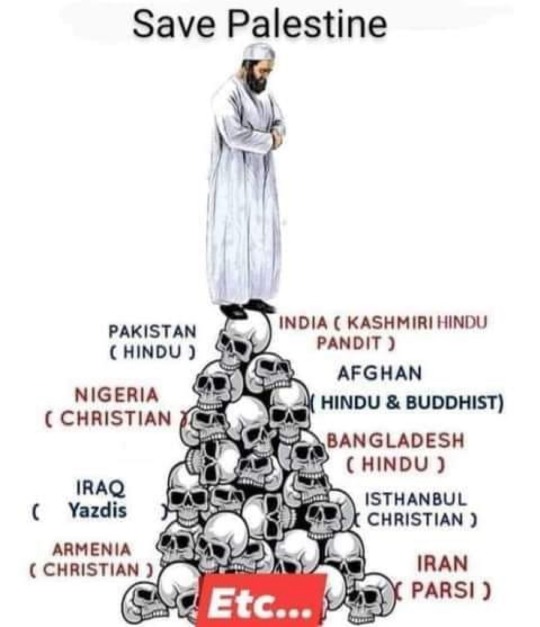
When most Westerners, especially the secular ones, think of religion they think of something they have seen in their own cultures and societies, i.e., Christianity, Judaism, Hinduism, and Buddhism.
And quite naturally, since most of them lack the insight and knowledge to understand Islam properly, they tend to lump it in with the other religions. That is a big mistake.
Islam can be properly described as a totalitarian way of life and a highly effective system of conquest, disguised as a religion.
Islam is totalitarian, not just in the sense of theocratic and dictatorial regimes, but also in the sense that there is virtually no part of a believer’s life that is not touched or influenced in some manner by it.
Virtually everything a Muslim does is influenced or guided by his faith, by Sharia law, or both.
In this sense, free will as Westerners and other non-Muslims understand it, is anathema to those inhabiting Dar al-Islam, the “House of Islam.”
Likewise, there is no real analog to the Western notion of liberty or freedom. The Arabic word most closely corresponding to “freedom” is typically said to be “hurriya,” but this is false for the term does not correspond to “liberty” or “freedom” in the sense that an American, for example, would understand it.
It instead means “freedom” to do as “Allah wills” for that individual.
Many traditional religious faiths and systems have laws or codes of law which attach to them.
What makes Sharia (Islamic) law unique, however, is that in theory, it applies not only to Muslims but to non-Muslims as well. At least that is what the Koran, the Hadith, and the Sira command.
Non-Muslims or kafirs, also known as infidels, ~ are denied the most basic of human rights under Islamic suzerainty.
They are most often akin to slaves, serfs, or supplicants, and even those non-Muslim dhimmis who serve a useful purpose to the sultan or caliph and survive on that basis, are still treated with inhuman brutality and can be beaten or slain at the whim of any Muslim male.
Most Westerners are familiar with the history of slavery, but how many know that Muslims have been the greatest slavers in history?
Which is to say, the most prolific takers, buyers, and sellers of slaves in history.
Even today, in many parts of the Islamic world, the Arabic word for slave, “Abd,” is synonymous with the slang or informal word for a black man.
Although the Muslims took many millions of black Africans as slaves, they likewise took many millions of Europeans and other peoples as slaves from temperate climates further north, venturing as far north as Ireland and Iceland on slave-taking raids.
As some of you may know, the very first war fought by the United States as an independent nation was the Barbary War of 1801-1805 (with a brief flare-up in 1815), fought against Islamic raiders and pirates off the coast of North Africa.
These nautical jihadists had been seizing American shipping and holding the passengers and cargo for ransom.
President Thomas Jefferson grew tired of their demands and sent the U.S. Navy and Marine Corps to Tripoli to teach them a lesson.
Various Islamic potentates, rulers, and warlords have infamously slain infidels by the multitudes down through the centuries.
According to the work of historians and political scientists who have studied such phenomena, the greatest or largest single genocide in human history was committed by the Islamic Mughal Empire in what is now the Indian sub-continent over years in the 15th century.
During that time, an estimated 270 million Hindus and other non-Muslims were put to the sword.
So many were slain that the streets ran with blood and giant pyramids of human skulls were erected by the soldiers of Allah.
Of course, many other empires and nations have committed acts of genocide, but such wanton bloodletting is impressive even by the standards of the worst tyrants of the 20th century, who had modern industrial warfare and weapons at their disposal but did not manage to even approach the totals of the Mughal Empire.
Historians consider the Armenian genocide (1915-1921) to be the first “modern” genocide since it was the first such atrocity that was recorded by still and motion-picture photography.
The Sunni Muslim Ottoman Empire in what is now modern-day Turkey was responsible for it and even today, under the government of Recep Erdogan, the president of Turkey, it is still a crime to speak or write of the extermination of the Armenians and Greeks, most of whom were Christians.
Anyone who has seen the haunting photos of young girls, Christian virgins, crucified by their captors and slowly dying in the hot sun in the desert, will never forget them.
These basic historical facts about Islam used to be widely known and taught across the West, but they have been politely airbrushed out of our history in recent decades, and now few people know of them …. or the danger presented by the soldiers of Allah.
26 notes
·
View notes
Text
Scientific knowledge and technology played a significant role in the expansion of colonial rule in India and the consequent incorporation of the Indian sub-continent into the [commercialized, imperial] world-system [...]. The colonization of nature, territory and people in British India led to a mutually constitutive interplay [...].
By the time the East India Company managed to establish a foothold in Bengal in 1757, [...] [a]fter the acquisition of the formal rights to collect revenues in the states of Bengal, Bihar and Orissa, the issue of obtaining accurate information about the extent of the produce, the population and other social statistics assumed significance. The detailed scientific surveys [...] were possible due to the large number of amateur scientists employed by the Company. Over time, these surveys played a major role in the transformation of a trading company into a colonial state [...] and the incorporation of India into the modern world-system. [...]
---
Considered the founder of British geography, James Rennell arrived in India in 1760 barely three years after the decisive battle of Plassey. Rennell’s cartographic skills caught the attention of the governor of Bengal presidency, who was ‘anxious to inaugurate some system for correcting and revising the geography of Bengal’ [...]. Rennell’s mapping out in great detail the area under the Company was indispensable for the rationalization of the extraction of surplus, administrative strategies and techniques of control. [...] In 1777 he left for England, and two years later he published the Bengal Atlas that led to his election to the Royal Society. [...] With reference to the ‘science wars’, [...] Rennell’s work was also incorporated in the key text[s] of the time, C. Lyell’s Principles of Geology (1830) [...] [and] the work of [...] Humboldt and Carl Ritter. Rennell’s surveys contributed to the organized [...] surveys [across wider regions of India] that followed after the defeat of Tipu Sultan of Mysore in 1799. [...] [Mysore's] sustained resistance to British power had a major impact on the general consciousness in Britain. [...]
Thomas de Quincey extolled the virtues of the ‘British bulldog’ against [...] the tyrannical ‘Bengal tiger’ [...]. The scientific knowledge that emerged as a consequence of the surveys of Mysore contributed [...] to the consolidation of administrative power [...]. The key figures associated with the surveys [included] Colin Mackenzie [...]. Mackenzie’s ethnographic notes contributed to imperial perceptions of the [...] [people of South Asia] and the grid of anthropological knowledge through which administrative power was deployed. [...]
---
Nature, culture and colonial power were inextricably implicated in the production of scientific knowledge and of colonial society. [...] The establishment the Public Works Department in 1854 provided fresh impetus for the deployment of science and technology in grappling with problems precipitated by colonial rule. Declining revenues for the Company focused attention on gigantic irrigation and other public works projects. [...]
The irrigation projects were expanded to include the railways (1849), the telegraph (1852), and the postal system (1850). Together, they represented the largest state-sponsored enterprise undertaken anywhere at that time. Lord Dalhousie, under whose tenure these projects were inaugurated, declared the railways, the telegraph and the postal system as the ‘three great engines of social improvement’.
His predecessor William Bentinck had already termed the railways ‘the great engine of moral improvement’ in a country ‘cursed from one end to the other by the vice, the ignorance, [...] the barbarous and cruel customs that have been the growth of ages under every description of Asian misrule’ [...]. Later observers were to wax ever more eloquent on the role of the railways in the modernization of India. For W. A. Rogers of the Indian Civil Service, railways ‘are opening the eyes of the people … they teach them that speed attained is time, and therefore money, saved or made’ (Adas1989: 226). The importance of a network of railways, connecting the cotton plantations of the Deccan region to the ports became significant especially during the 'cotton famine' of 1846 [...].
---
Almost immediately after Dalhousie left India, secure in the belief that the double engines of moral improvement and legitimacy were at work, the rebellion of 1857 put an end to such expectations. The rebellion was partly triggered in response to the wide-ranging transformations [...] triggered off by the introduction of [these] new [colonial infrastructures] [...].
In the end, the rebellion was violently suppressed by the very technologies that had precipitated it in the first place. [...]
---
All text above by: Zaheer Baber. "Colonizing nature: scientific knowledge, colonial power and the incorporation of India into the modern world-system". British Journal of Sociology 52(1), pages 37-58. April 2001. [Bold emphasis and some paragraph breaks/contractions added by me. Presented here for commentary, teaching, criticism purposes.]
#ecology#abolition#multispecies#landscape#geography#temporal#temporality#colonial#imperial#tidalectics#indigenous#archipelagic thinking#intimacies of four continents#plantations#carceral geography#opacity and fugitivity
38 notes
·
View notes
Text
DAY 5525
Jalsa, Mumbai Apr 2, 2023 Sun 11:49 PM
Birthday Ef
🪔 .. April 03 .. birthday wishes to Ef Haarsha Balraj from South Africa .. Ef Krishna urf Kris Dwivedi from Bilaspur CG .. and Ef Divyansh Rawat from Lucknow .. love and happiness .. ❤️❤️❤️🌿 and all the good wishes from the family Ef
..
and the Sunday meetings at the Gate be in preference of course .. hence here

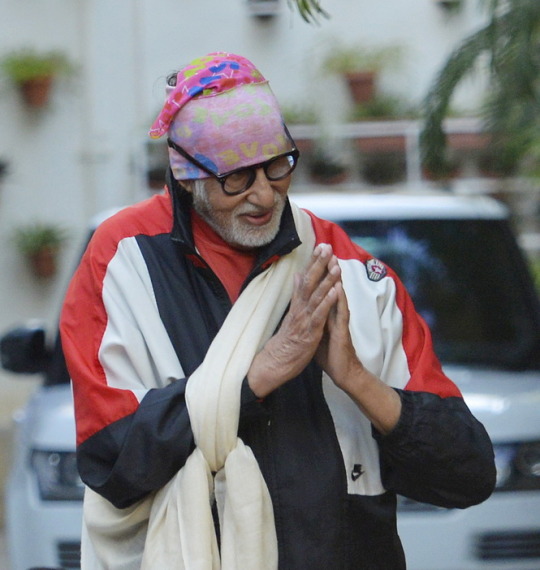





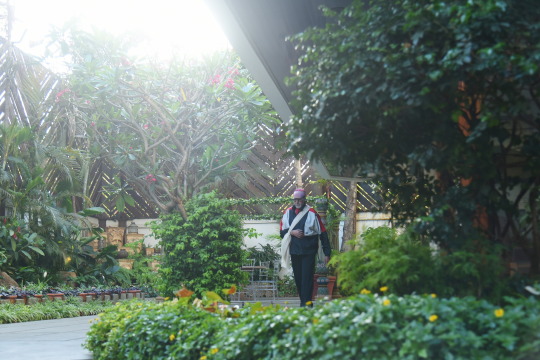



And the very revealing aspect for the coming day be that on April 3, for the first time an adventure took place .. the first plane to fly over the Everest .. in the year 1934 , apparently ..
Justification :
📌 .. and on this day .. April 3, 1933 .. conquering the impossible .. happened the first fly ever over Everest 🏔️ .. by two British aircraft of type Westland Wallace bi-planes .. crewed by Squadron Leader Douglas-Hamilton and Colonel LVS Blacker in one and Flight Lieutenant MacIntyre and Mr SR Bonnet in the other .. they took off from Lalbalu aerodrome, near Purnea, India .. the flight lasted for around three hours, covered a return distance of 320 miles reaching nearly 30,000 feet clearing the mountain by a reported 100 feet .. close range photographs of Mt Everest proved the achievement which previously was not possible to any airplane ..
further justification -






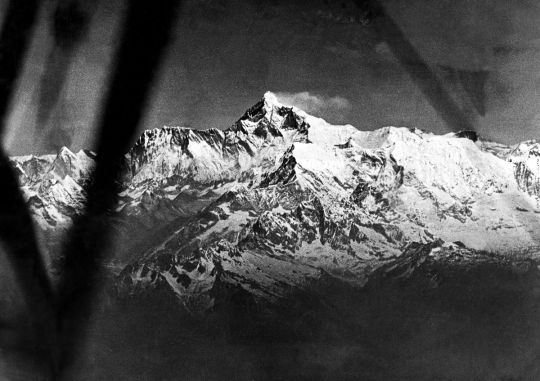
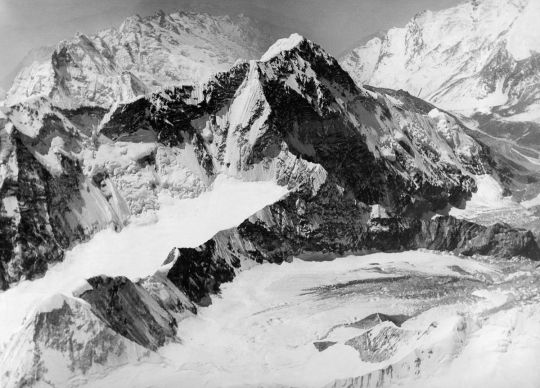

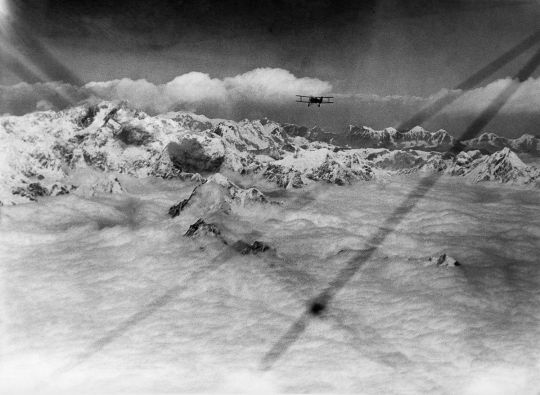



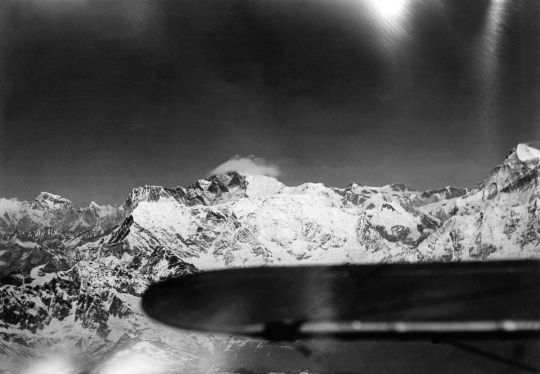

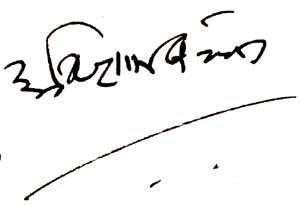
the peak , the highest point on Earth .. the mountain , the Himalayas and the feat that seems to this generation to be no big deal, because they are unaware of the conditions and circumstances that prevailed then ..
Everest .. named by the British when they ruled over India ..
In the nineteenth century, the mountain was named after George Everest, a former Surveyor General of India. The Tibetan name is Chomolungma, which means “Mother Goddess of the World.” The Nepali name is Sagarmatha, which has various meanings.
Sagarmatha .. ‘sagar’ , the Ocean .. ‘matha’ churning .. and the Indian mythology that the Oceans were churned by the mountain to produce the ‘amrit’ ..
my interpretation .. though the knowledge from the records says this :
Sagarmatha is a Sanskrit word, from sagar = "sky" (not to be confused with "sea/ocean") and matha = "forehead" or "head", and is the modern Nepali name for Mount Everest.
the Goddess of the Sky .. in Tibet it is addressed as
Therefore, the historic, local Tibetan name for Mount Everest is Chomolungma, also spelled Qomolangma, meaning "Goddess Mother of the World." Chomolungma is pronounced "CHOH-moh-LUHNG-m?." The Nepali name for Mount Everest is Sagarmatha, meaning "Godess of the Sky." Some refer to the entire massif of peaks as ...
and the many adventure stories on the Sagarmatha prevail ..
And the great thrill at the time of a shooting in Nepal, when I went on a plane that flew us right next to the Everest and the experience almost unreal ..
Such be the moments of remembrance ..
It was a touristy matter and many such flights I do believe operate from Kathmandu, Nepal for the pleasure of tourists .. even now ..
Its majesty has never reduced despite the conquering of it by several now .. and the very sight of which evokes so much wonder .. the wonder of the Gods .. the makers that introduced us to us all .. and the reason of its formation .. that the entire subcontinent now known as India was a part of the continent of Africa, at Egypt .. and many millions of years ago the entire subcontinent broke away from the mother board and shifted travelled over the Indian Ocean, to the Eastern sub continent and attached itself there .. the impact of the joining of the land mass being so great , it formed the realm, now known as the Himalayas !!
I do not have authenticity on this , but it does seem to be believed , historically and geographically .
and the day in recuperation and the meeting at the Gate , of the ever present well wisher ..
Amitabh Bachchan
and the signature above out of place , because the icon that opens the Desktop to search the sign is JUST not appearing ..
and this has been on several times before too ..
this model of the updated Mac, the Ventura is absurd and has created many problems ..
deliberately done to attract more when the changed model is brought out ?? marketing and manufacturing often does that .. the deliberation to access the mode of investing in the latest and doing away with the present ..
154 notes
·
View notes
Note
I genuinely think we should abolish Europe as a concept since it only exists due to white and christian exceptionalism. There´s no good reason for europe to be considered a continent when the Indian sub continent and the Arabian peninsula (which actually lie on their own tectonic plates) aren´t. Lbr if they hadn´t become muslim the middle east (and maybe even north africa) would be considered european
huh. interesting idea havent thought abt it like that. im not disagreeing w u but i just want to point out that the europe/asia/africa division existed p similarly to what we know today existed in grecoroman times, even when there were many greeks n romans in asia n africa n when the entire mediterranean was roman n later xtian

7 notes
·
View notes
Text
By Ralph Nader
Common Dreams Opinion
Sept. 9, 2023
Our national charter needs amending to deal with big corporations, which in turn requires a mass movement.
The headlines on climate catastrophes are becoming more informative as they become more ominous. For years the media headlines have been describing record floods, droughts, wildfires, heatwaves, hurricanes and other fossil-fueled disasters of an abused Mother Nature. The immediate human casualties are devastating.
Very recently, the headlines have been steering us toward what happens in the aftermath of natural disasters in afflicted regions around the world.
The Washington Post yesterday front-paged a huge headline “Climate-Linked Ills Threaten Humanity,” followed by the sub-headline: “Pakistan is the epicenter of a global wave of climate health threats.” The reporters opened their long analysis with almost biblical language: “The floods came, and then the sickness.”
The record heat wave and flooding that left one-third of Pakistan under water have unleashed “dark clouds of mosquitoes” spreading malaria. Food supplies were reduced by drenched fields unable to grow crops. The article depicted a world map with color-coded measures of dangerous heat waves. The Indian sub-continent is registered as having one of the longest annual heat-intense periods. Over 40 million Pakistanis will endure dangerous heat for over six months a year “unless they can find shade… Extreme heat, which causes heatstroke and damages the heart and kidneys” is just one consequence.
Our Constitution never once mentions “corporation” or “company” – it only speaks of “We the People” and “persons.”
Dengue fever surged in Peru. Canadian wildfires poured smoke and particulates into the U.S. triggering asthma attacks. Famine lurks in East Africa’s worst drought in 40 years, while contaminated water takes its toll on many diseases, especially horrifying for infants and young children.
Another consequence recorded by the Post with the headline “Amid Record Heat, Even Indoor Factory Workers Enter Dangerous Terrain” in Asia. Public Citizen’s Health Research Group, led by Dr. Sidney Wolfe, was a pioneer in petitioning OSHA to issue regulations to protect workers against extreme heat (See: https://www.citizen.org/topic/heat-stress/). Corporate OSHA stalled. Then the Biden Administration proposed modest regulations that are facing corporate opposition and years of delay by corporate attorneys.
Until overturned by a Texas court, Governor Greg Abbott overrode some ordinances that were passed in large Texas cities requiring drinking water breaks for construction workers laboring under 100-degree temperatures.
Abbott, arguably the cruelest governor in the United States – unless Florida Governor Ron DeSantis out-snarls him – thought he could get away with this bit of brutishness. After all, he is in Texas, where the oil and gas lobby (Exxon Mobil Et al.) is pushing to increase North American exploration, production, and burning of these well-documented omnicidal sources of global warming and climate violence.
The oil, gas and coal industry’s tentacles have encircled a majority of the 535 lawmakers in Congress to shield and maintain huge tax subsidies behind the industry’s lethal drive for increased production. Its marketeers see their profitable circular death dance intensify as hotter days lead to higher air conditioning loads.
Running berserk with their bulging profits, these giant energy companies worldwide are forging a suicide pact with an abused Mother Earth. The projections for what climate eruptions will do to humans and the natural world continue to be underestimated. The realities each year exceed scientists’ predictive models.
With no other driving value system than short-term profits, these artificial entities or companies, and corporations controlling different dangerous technologies, cannot be allowed equal justice under the law with real human beings driven by other far more important life-sustaining and morally enhancing values. For over 2000 years, every major religion has warned about subordination by the merchant class of civilized values. The great “soft energy” or renewable energy prophet and physicist, Amory Lovins, put this critical declaration in modern, secular language when he wrote: “Markets make good servants, but bad masters.”
Our Constitution never once mentions “corporation” or “company” – it only speaks of “We the People” and “persons.” Our national charter needs amending to deal with big corporations, which in turn requires a mass movement. Since ravaging corporations impact people with indiscriminate harm, not caring whether the victims are liberals or conservatives, the political prospect for a decisive left/right coalition is as auspicious as ever.
Tens of millions of hard-pressed American workers have given up on themselves securing a government that works for them, instead of for short-sighted, greedy corporations.
The pressure for such a coalition is growing daily. Insurance companies, citing climate disaster claims, are skyrocketing homeowners and auto insurance premiums, or worse, either redlining areas or altogether pulling out of some states such as Florida. Some coastal areas will soon be private insurance deserts, requiring entry by state-run insurance coverage, at least for reinsurance purposes.
Overpaid insurance company CEOs are starting to demand bailouts without even guaranteeing coverage for consumers.
Faster and faster, the second, third and fourth waves of after-effects of these man-made natural disasters will become all-enveloping punishers of societies that are failing to head off the looming dangers, now maturing into evermore desperate states of living.
On Capitol Hill, a domestically paralyzed Congress only comes together every year to hoopla its bipartisan mega-billion-dollar additions to the bloated, unaudited Pentagon budget – taking over half of the entire federal government’s operating budget. Congress regularly gives the Generals more than they request.
Meanwhile, back home, tens of millions of hard-pressed American workers have given up on themselves securing a government that works for them, instead of for short-sighted, greedy corporations. These Americans continue to ignore the historically validated truth – no more than one active percent of the citizenry, representing the majority public opinion, can quickly make a large majority of those 535 Congressional Senators and Representatives fight first and foremost for the public interest.
Our work is licensed under Creative Commons (CC BY-NC-ND 3.0). Feel free to republish and share widely.
RALPH NADER
Ralph Nader is a consumer advocate and the author of "The Seventeen Solutions: Bold Ideas for Our American Future" (2012). His new book is, "Wrecking America: How Trump's Lies and Lawbreaking Betray All" (2020, co-authored with Mark Green).
Full Bio >
#climate crisis#climate emergency#climate change#fossil fuels#u.s. constitution#corporate power#corporate greed#ralph nader
41 notes
·
View notes
Photo




DIY Jalebi
Jalebi – the deep-fried pretzel-like sweet from India, is well-celebrated among food lovers. Across the Indian sub-continent, it is readily available at sweet shops, restaurants, and street carts.
✖✖✖✖✖✖✖✖
sew-much-to-do: a visual collection of sewing tutorials/patterns, knitting, diy, crafts, recipes, etc.
109 notes
·
View notes
Text

Indian Peafowl (Pavo cristatus), male, family Phasianidae, native to the Indian Sub-continent
photograph by Stuart Chan
506 notes
·
View notes
Photo


The Heptagram of the Seven DaysThe Heptagram of the Seven days is a particularly interesting way to view the order of the celestial bodies. If reading clockwise from the top-most symbol, it is the order of the planets from the Geo-centric Qabalistic model: Saturn, Jupiter, Mars, Sol, Venus, Mercury, Luna. If read following the lines of the Heptagram, one gets the days of the week: Saturday (Saturn’s Day), Sunday (Sun’s Day), Monday (Moon’s Day), Tuesday (Tiw’s Day, Norse War God), Wednesday (Wodin’s Day), Thursday (Thor’s Day), Friday (Frigga’s Day, Norse Love God.) Crowley attributes this realization to Frater Deo Duce Comite Ferro, S.L. MacGregor Mathers. This is one of two different kinds of Heptagrams. This version is known as 7/3 Heptagram, as each line connects the planet that is three planets away. The other version of the Heptagram is called a 7/2 Heptagram, and is used for the Seal of A∴A∴.
DANCE OF THE SEVEN VEILS
“The seven spheres attached to the seven planets symbolize seven principles, seven different states of matter and spirit, seven different worlds which each man and each humanity must pass through in their evolution across a solar system.” – The Wisdom of Egypt7 the sum of my name YOSRA HARZALLAH7 Daughters of Atlas7 Stages of Alchemy - Calcination, Dissolution, Separation, Conjunction, Fermentation, Distillation, Coagulation.7 Hermetic principles - Mentalism, Correspondence, Vibration, Polarity, Rhythm, Cause and Effect, Gender.7 Notes of the musical scale.7 Systems of Symbolism - numbers, geometrical figures, letters, words, magic, alchemy, astrology.7 Rays of Light - Red, Orange, Yellow, Green, Blue, Purple, Violet.7 Planets of Antiquity - Moon, Mercury, Venus, Sun, Mars, Jupiter, and Saturn.7 Churches of Asia Minor7 Personality Types - Lunar, Mercurial, Venusian, Solar, Martial, Jovial, Saturnine.7 Days of Week - Sunday, Monday, Tuesday, Wednesday, Thursday, Friday, Saturday.7 Arch Angels - Michael, Gabriel, Raphael, Uriel, Chamuel, Jophiel, and Zadkiel.7 Metals of Antiquity - Lead, Tin, Iron, Copper, Mercury, Silver, Gold.7 Chakras - Muladhara, Svadhisthana, Manipura, Anahata, Vishuddha, Ajna, Sahasrara.7 Emotive Spheres of Kabbalah7 Seals.7 Root Races, each with 7 sub-races7 Days of Creation7 Virtues - Faith, Hope, Charity, Fortitude, Justice, Prudence, Temperance.7 Vices - Pride, Envy, Anger, Sloth/dejection, Avarice, Gluttony, Lust.7 Stages of Man - the infant, the school-boy, the lover, the soldier, the judge, the elderly man, the senile one.7 Liberal Arts - grammar, rhetoric, logic, arithmetic, music, geometry, and astronomy - the first three in the Trivium, the latter four in the Quadrivium.7 Wonders of the Ancient World - Pyramids of Egypt, Hanging Gardens of Babylon, Statue of Zeus at Olympia, Temple of Artemis at Ephesus, Mausoleum of King Mausolus at Halicarnassus, Colossus of Rhodes, Pharos Lighthouse at Alexandria.7 Headed Hydra7 Headed Lion7 Headed Dragon7 Headed Serpent7 Seas - Arctic, Antarctic, North and South Pacific, North and South Atlantic and the Indian Ocean.7 Continents - North America, South America, Africa, Europe, Asia, Australia and Antarctica.7 Seven Sisters of the Pleiades star system.7 Parts to the embryo - Amnion, Chorionic Villi, Spinal Cord, Heart, Brain, Umbilical Cord, Yolk Sac.7 Parts of the body - Head, Thorax, Abdomen, Two Arms, Two Legs.7 Major Organs - Brain, Heart, Lungs, Stomach, Intestines, Liver, and Pancreas.7 Glands - Pineal, Pituitary, Thyroid, Thymus, Adrenal, Lyden and Gonad.7 Divisions to the brain - Cerebrum, Cerebellum, Pons Varolii, Medulla Oblongatta, Corpus Callosum, Spinal Cord, Meninges.7 Parts to the inner ear - Vestibule, Auditory Canal, Tympanic Membrane, Ossicles, Semi-circular Canal, Cochlea, Membranous Labyrinth.7 Parts to the retina - Cornea, Aqueous Humor, Lens, Vitreous Humor, Retina, Sclera, Iris.7 Cavities to the heart - Right and Left Ventricle, Right and Left Atrium, Tricuspid Valve, Mitral Valve, Septum.7 Body systems - Muscular, Skeletal, Nervous, Digestive, Respiratory, Excretory, Circulatory.7 Bodily functions - Respiration, Circulation, Assimilation, Excretion, Reproduction, Sensation, Reaction.7 Levels in the Periodic Table of the Elements.…and, of course, the 7 Dwarfs.“The Principles of Truth are Seven; he who knows these, understandingly, possesses the Magic Key before whose touch all the Doors of the Temple fly open.” –The Kybalion“And God created seven Heavens and seven Earths, and through them all, descends His Command.” – scriptural translation
199 notes
·
View notes
Text
Representation of Ethnic Roma Women in animation. Roma gypsies originated in Indian Sub Continent and migrated to Romania and rest of Europe a long time ago. These people saw the rule of the Byzantine Empire which was was continuation of Roman Empire and in many ways mimicked the Romans. They gypsies suffered at the hands of Byzantines and also watched their defeat.
In season 4, where Greta says " My family escaped from the Romans " she is referring to the Byzantine Romans. She also says "my family arrived here when it was empty place " referring to the migration in Transylvania. If you look at the time line of Castlevania which is 15th century and look up Romania during mediavel Europe where the story takes place, you will find existence of local Romanis beside other ethnic groups like Tatars, Slavs,Goths,Szekelys and such. Historically speaking, black people went to Romania much later after 15th century, sometime around 19th - 20th century during communist era.
Greta's ethnic representation is accurate when you match the the timeline of the show with the real thing. 👌
Greta of Castlevania - One on the left is a more dignified chief of village.
Esmeralda of Disney - One on the right is a flamboyant performer in the streets.
Both are exotic beauties of Indian origin. 💜

#alucard#castlevania#dracula#story#animation#gretacard#adrian tepes#greta of danesti#heterosexual#alucard x greta#greta x alucard#castevania greta#the hunchback of notre dame#romani people#romania#gypsy#gypsy girl#tumblr girls#pretty#anime art#i love her#straight people#callingallromanis
113 notes
·
View notes
Text
Important events that actually took place on September 9th and were in no way a figment of a sad, delusional man and his advisors' imagination in order to continue a nefarious and daft lie.
1543- Mary Stuart, at 9 months old, is crowned Queen of Scots
1675- New England colonies declare war on Wampanoag Indians
1753- 1st steam engine arrives in North American colonies
1776- Congress officially renames the country as the United States of America (from the United Colonies)
1817- Alexander Twilight, probably first African American to graduate from a US college, receives BA degree at Middlebury College
1836- Ralph Waldo Emerson publishes his influential essay "Nature" in the US, outlining his beliefs in transcendentalism
1850- California becomes a state
1880- President Rutherford B. Hayes visits San Francisco
1888- Easter Island / Rapa Nui in the Pacific is annexed by Chile
1892- Edward Emerson Barnard at Lick Observatory discovers Amalthea, Jupiter's 5th moon
1904- Boston Herald again refers to NY baseball club as Yankees, when it reports "Yankees take 2," Yankee name not official till 1913
1908- Orville Wright makes 1st 1-hr airplane flight, Fort Myer, Virginia
1908- Russia annexes part of Poland
1911- 1st European post delivered by air (Hendon to Windsor, England)
1921- Guatemala, Honduras and San Salvador agree to Central American Union
1922- Turkish troops take the Greek-held Anatolian city of Smyrna during the Greco-Turkish War
1926- National Broadcasting Company created by Radio Corporation of America
1936- New York Yankees beat Cleveland Indians, 12-9 at League Park to clinch AL pennant on the earliest date in history
1939- Nazi army reaches Warsaw
1942- Compulsory work for women, children and old males in Batavia
1944- Allied forces liberate Luxembourg
1945- 1st "bug" in a computer program discovered by Grace Hopper, a moth was removed with tweezers from a relay & taped into the log
1950- 1st use of TV laugh track by "The Hank McCune Show" in the US
1951- 1st broadcast of soap opera "Love of Life" on CBS-TV
1955- Don Zimmer, hits 4,000th Dodger home run
1956- Elvis Presley appears on "The Ed Sullivan Show" for the 1st time
1957- US President Eisenhower signs 1st civil rights bill since Reconstruction
1960- Pakistan ends India's run of 6 consecutive Olympic field hockey gold medals with a 1-0 win over their sub-continent rivals at the Rome Games
1963- Alabama Governor George Wallace served a federal injunction to stop orders of state police to bar black students from enrolling in white schools
1965- LA Dodgers future Baseball Hall of Fame pitcher Sandy Koufax throws his 4th career no-hitter and first perfect game in a 1-0 win over the Chicago Cubs at Dodger Stadium
1966- The National Traffic and Motor Vehicle Safety Act signed into law by U.S. President Lyndon B. Johnson, 1st federal safety standards for vehicles and roads
1967- 1st successful Test flight of a Saturn V
1969- The Official Languages Act comes into force in Canada - making English and French the country's official languages (replaced 1988 by new Official Languages Act)
1971- Apple Records releases John Lennon's second solo studio album, "Imagine" in US; it tops the charts in US, UK, Australia, and 3 other countries
1972- West German equestrian rider Liselott Linsenhoff follows her dressage teams gold in Mexico City with the individual dressage title at her home Olympics in Munich
1975- Paul McCartney & Wings begin their "Wings Over The World" tour in Southampton, England; 65 concerts in Europe, Australia, Canada, and United States, runs through October of 1976
1978- Ayatollah Khomeini calls for an uprising in the Iranian army
1979- 31st Emmy Awards: "Taxi"; "Lou Grant"; Ron Leibman & Ruth Gordon win
1983- Radio Shack announces their color computer 2 (Coco2)
1985- President Reagan orders sanctions against South Africa, targeting apartheid
1987- Larry Bird of the Celtics begins an NBA free throw streak of 59
1987- Gary Hart admits on "Nightline" to cheating on his wife
1990- George H. W. Bush and Mikhail Gorbachev meet in Helsinki & urge Iraq to leave Kuwait
1990- Liberia president Samuel K Doe is captured by Mr Johnson's forces
1991- Mike Tyson indicted for rape of Desiree Washington
1993- Israel and the Palestine Liberation Organization exchange letters of mutual recognition
2010- A court in the Philippines orders Imelda Marcos to repay the government almost $280,000 for funds taken from the National Food Authority by Ferdinand Marcos in 1983
2012- Armenia wins the 40th FIDE Chess Olympiad
2015- Apple unveils the iPad Pro and iPhone 6S in San Francisco
2015- Queen Elizabeth II becomes Great Britain's longest-reigning monarch at 63 years and seven months, beating the previous record set by her great-great-grandmother, Queen Victoria
2017- Egyptian archaeologists announce the discovery of a 3,500-year-old tomb of a goldsmith and his family in Draa Abul-Naga, Egypt
2018- CBS chief Les Moonves departs the company after six more women make allegations of sexual abuse in "The New Yorker"
2019- Poet John Milton's own copy of Shakespeare's First Folio of 1623 has survived with his annotations according to scholar Jason Scott-Warren in Philadelphia library, could be world's most important modern literary discovery
2020- San Francisco Bay area blanketed by dark orange skies and smoke due to California wildfires
2021- Tom Brady becomes first player in NFL history to start 300 regular season games as he guides Tampa Bay Buccaneers to an opening day 31-29 win at home to Dallas Cowboys
ALL of these are more important than something that never happened on this day.
4 notes
·
View notes
Text
When most Westerners, especially the secular ones, think of religion they think of something they have seen in their own cultures and societies, i.e., Christianity, Judaism, Hinduism, and Buddhism.
And quite naturally, since most of them lack the insight and knowledge to understand Islam properly, they tend to lump it in with the other religions. That is a big mistake.
Islam can be properly described as a totalitarian way of life and a highly effective system of conquest, disguised as a religion.
Islam is totalitarian, not just in the sense of theocratic and dictatorial regimes, but also in the sense that there is virtually no part of a believer’s life that is not touched or influenced in some manner by it.
Virtually everything a Muslim does is influenced or guided by his faith, by Sharia law, or both.
In this sense, free will as Westerners and other non-Muslims understand it, is anathema to those inhabiting Dar al-Islam, the “House of Islam.”
Likewise, there is no real analog to the Western notion of liberty or freedom. The Arabic word most closely corresponding to “freedom” is typically said to be “hurriya,” but this is false for the term does not correspond to “liberty” or “freedom” in the sense that an American, for example, would understand it.
It instead means “freedom” to do as “Allah wills” for that individual.
Many traditional religious faiths and systems have laws or codes of law which attach to them.
What makes Sharia (Islamic) law unique, however, is that in theory, it applies not only to Muslims but to non-Muslims as well. At least that is what the Koran, the Hadith, and the Sira command.
Non-Muslims or kafirs, also known as infidels, ~ are denied the most basic of human rights under Islamic suzerainty.
They are most often akin to slaves, serfs, or supplicants, and even those non-Muslim dhimmis who serve a useful purpose to the sultan or caliph and survive on that basis, are still treated with inhuman brutality and can be beaten or slain at the whim of any Muslim male.
Most Westerners are familiar with the history of slavery, but how many know that Muslims have been the greatest slavers in history?
Which is to say, the most prolific takers, buyers, and sellers of slaves in history.
Even today, in many parts of the Islamic world, the Arabic word for slave, “Abd,” is synonymous with the slang or informal word for a black man.
Although the Muslims took many millions of black Africans as slaves, they likewise took many millions of Europeans and other peoples as slaves from temperate climates further north, venturing as far north as Ireland and Iceland on slave-taking raids.
As some of you may know, the very first war fought by the United States as an independent nation was the Barbary War of 1801-1805 (with a brief flare-up in 1815), fought against Islamic raiders and pirates off the coast of North Africa.
These nautical jihadists had been seizing American shipping and holding the passengers and cargo for ransom. President Thomas Jefferson grew tired of their demands and sent the U.S. Navy and Marine Corps to Tripoli to teach them a lesson.
Various Islamic potentates, rulers, and warlords have infamously slain infidels by the multitudes down through the centuries.
According to the work of historians and political scientists who have studied such phenomena, the greatest or largest single genocide in human history was committed by the Islamic Mughal Empire in what is now the Indian sub-continent over years in the 15th century.
During that time, an estimated 270 million Hindus and other non-Muslims were put to the sword.
So many were slain that the streets ran with blood and giant pyramids of human skulls were erected by the soldiers of Allah.
Of course, many other empires and nations have committed acts of genocide, but such wanton bloodletting is impressive even by the standards of the worst tyrants of the 20th century, who had modern industrial warfare and weapons at their disposal but did not manage to even approach the totals of the Mughal Empire.
Historians consider the Armenian genocide (1915-1921) to be the first “modern” genocide since it was the first such atrocity that was recorded by still and motion-picture photography.
The Sunni Muslim Ottoman Empire in what is now modern-day Turkey was responsible for it and even today, under the government of Recep Erdogan, the president of Turkey, it is still a crime to speak or write of the extermination of the Armenians and Greeks, most of whom were Christians.
Anyone who has seen the haunting photos of young girls, Christian virgins, crucified by their captors and slowly dying in the hot sun in the desert, will never forget them.
These basic historical facts about Islam used to be widely known and taught across the West, but they have been politely airbrushed out of our history in recent decades, and now few people know of them …. or the danger presented by the soldiers of Allah.

21 notes
·
View notes